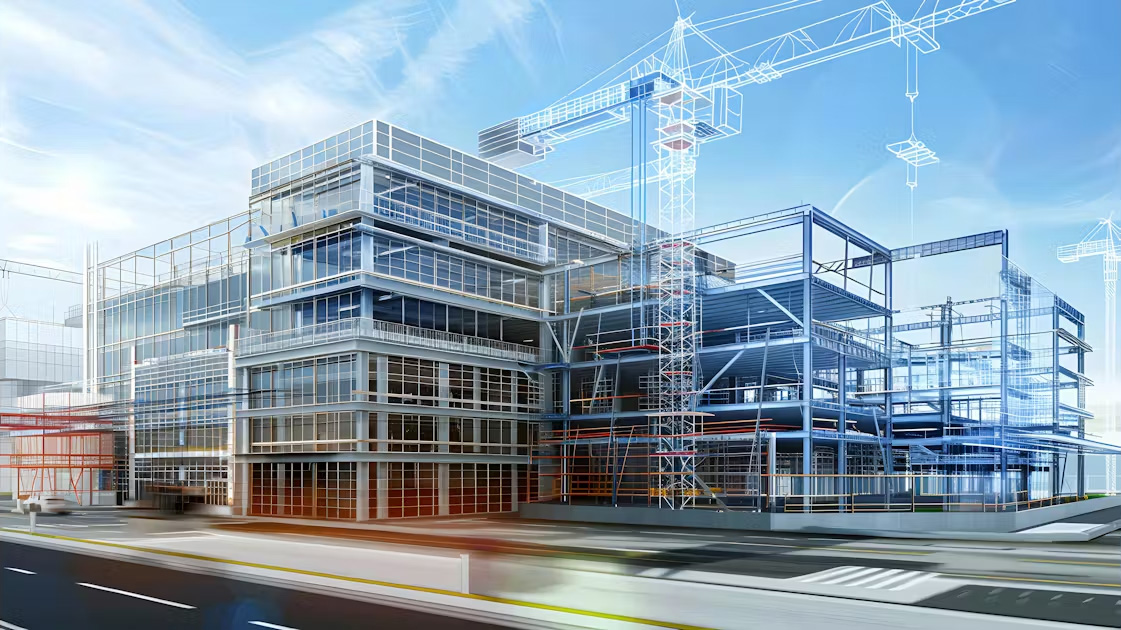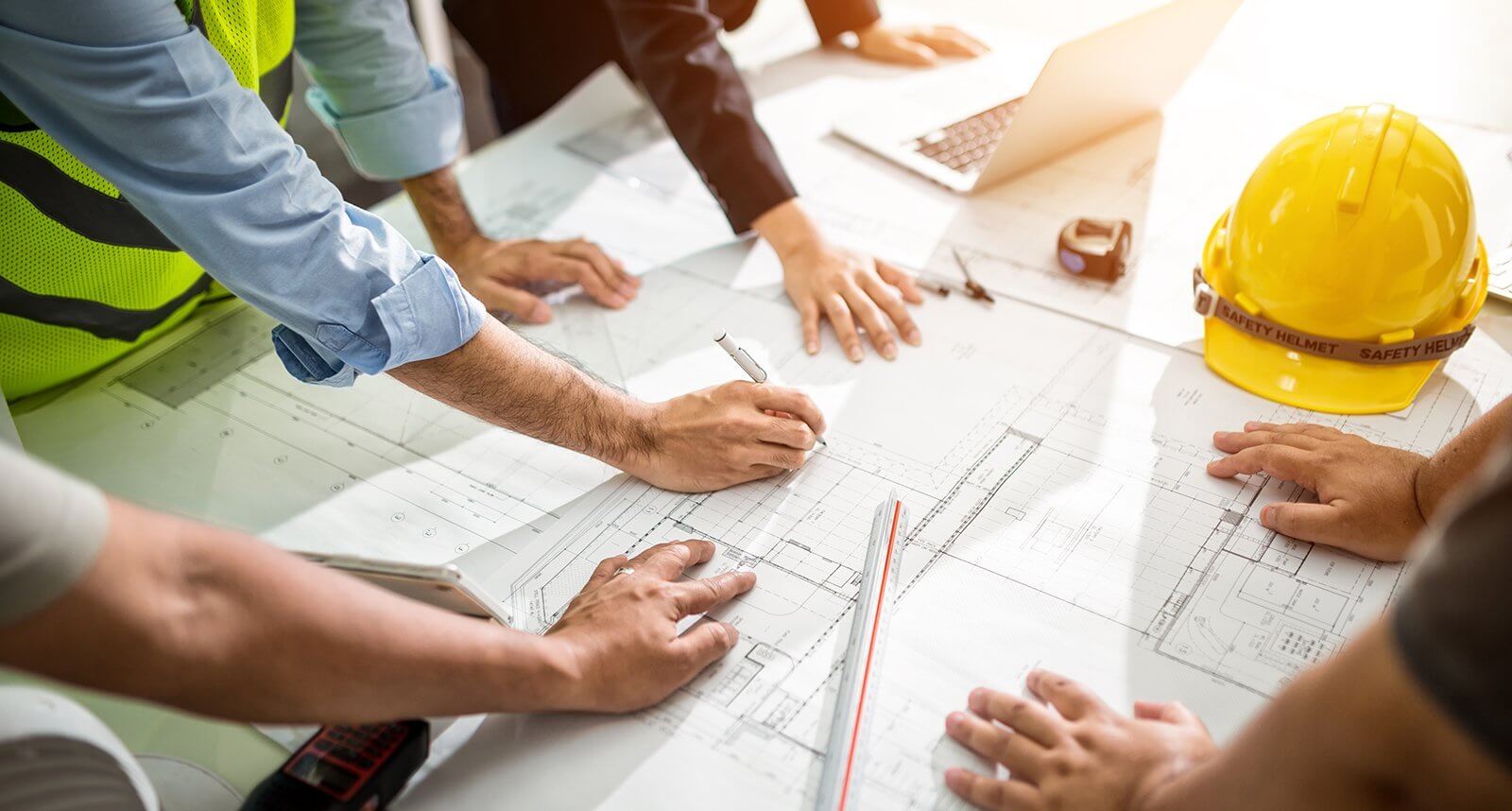by Jeffrey C Kadlowec, Architect
Abstract
Construction processes differs greatly from manufacturing procedures. Labor productivity and performance, project changes and delays, and misinterpretation or misunderstand negatively impact profitability and sustainability. Building Information Modeling (BIM) offers many ways to increase efficiency, however implementation and utilization of this technology remains challenging. Workflow and protocols must transition from traditional 2D documents into 3D, 4D or 5D virtual environments. Research and understanding are the first steps to harnessing these potential benefits.
Keywords: BIM implementation, risk management, organizational readiness, sustainable construction

Building Information Modeling
The construction industry is complex and fragmented [Famadico 2023], unlike manufacturing which has become well-refined and high-automated. Challenges remain in labor productivity and performance which are result in project changes and delays. Coupled with inconsistency in information and misinterpretation of plans results in misunderstanding by stakeholders that negatively impact company profitability and project sustainability.
The development, implementation and utilization of building information modeling (BIM) software within the architecture, engineering and construction (AEC) sector provides opportunities to increase performance and efficiency [Famadico 2023]. This technology is changing the way buildings are designed, constructed and operated. It allows for better collaboration of project stakeholders which offer improvements to project outcome through database modeling, visualization, analysis, and simulation throughout the development phases [Herumanta 2022]. The integration of digital information represents a paradigm shift that is revolutionizing the construction industry.
Construction consist of a variety of direct and indirect costs along with the management of a myriad of material and labor resources. BIM allows for the creation of accurate virtual construction models which are intended to reduce cost, save time, and provide for more efficient control of a project [Tamara 2021]. Construction documents have historically been 2D representations of buildings with occasional presentation of 3D drawings, renderings or physical models. BIM is a 3D digital model which can also contain 4D (time, schedule) and 5D (material, cost data) information. This type of model, when properly created and maintained, can provide a real-time picture of the entire project from conception to completion.
The primary objectives of any construction project are time, budget, quality, scope of work and customer satisfaction. Focusing on risk management to efficiently mitigate negative aspects that threaten these factors over the lifecycle is crucial to successful completion [Abdelalim 2023]. Utilizing modern technology in project management to coordinate various disciplines and multiple stakeholders will raise performance by outlining changing objectives. Research illustrates many benefits of BIM in construction; a general understanding of the vast array of tools and features will assist in making decisions about how it should be best implemented.
When an AEC organization to ready to adopt BIM, it must first shift workflow and protocols in preparation for the transition. Poor planning of this process will not generate intended benefits, and could result in profit losses, project failure or abandonment of these new design, documentation and construction administration methods [Magalhaes 2023]. Organizational readiness from a managerial level is essential to facilitating the rollout; this includes: 1) need for implementing, 2) acquiring knowledge, 3) decision to proceed, 4) evaluation of technical, financial and strategic innovations, 5) allocation of resources, and 6) acquisition, preparation and testing [Magalhaes 2023]. Similar to handbook published by the National CAD Standard (NCS), the National BIM Standard (NBIMS) provides valuable resources for that endeavor.
Society is defined by comfort level, well-being and quality of life. The goal of the building sector is to provide basic living requirements [Kineber 2023]. Governments prioritize affordable housing by enacting regulations, inadvertently leading to building abandonment, schedule delays, cost overruns, and poor quality. Despite the many benefits of BIM, its potential and possibilities have not yet been fully explored. New means and methods must constantly be developed across all project stages to maximize profits without sacrificing functionality.
References
Abdelalim, Ahmed; Samadony, Adel & Elnaggar, Ahmed. (2023). Investigating the Role of Building Information Modeling in Risk Management of Construction Projects. 10.13140/RG.2.2.16872.44806.
Famadico, Jerome Jordan. (2023). Building Information Modeling in the Architecture and Construction Industry. Advances in Technology Innovation. 8. 121-135. 10.46604/aiti.2023.9854.
Herumanta, Bambang; Islami, Rizky & Hazhiyah, Amalia. (2022). The Effects of Building Information Modeling (BIM) Implementation in the Success of Construction Projects. International Journal of Engineering Science Technologies. 6. 52-62. 10.29121/ijoest.v6.i3.2022.326.
Kineber, Ahmed; Othman, Idris; Famakin, Ibukun; Oke, Ayodeji & Magdy Hamed, Mohammed & Olayemi, Taiwo. (2023). Challenges to the Implementation of Building Information Modeling (BIM) for Sustainable Construction Projects. Applied Sciences. 13. 3426. 10.3390/app13063426.
Magalhaes, Rachel; Mello, Luiz & Hippert, Maria Aparecida. (2023). Organizational Readiness for Building Information Modeling. Frontiers in Engineering and Built Environment. 3. 137-152. 10.1108/FEBE-07-2022-0028.
Tamara, Dewi & Ogan, Syailendra. (2021). The Implementation of Building Information Modeling Technology on Building Construction. International Journal of Applied Science. 7. 1-10. 10.53555/eijas.v7i3.50.



